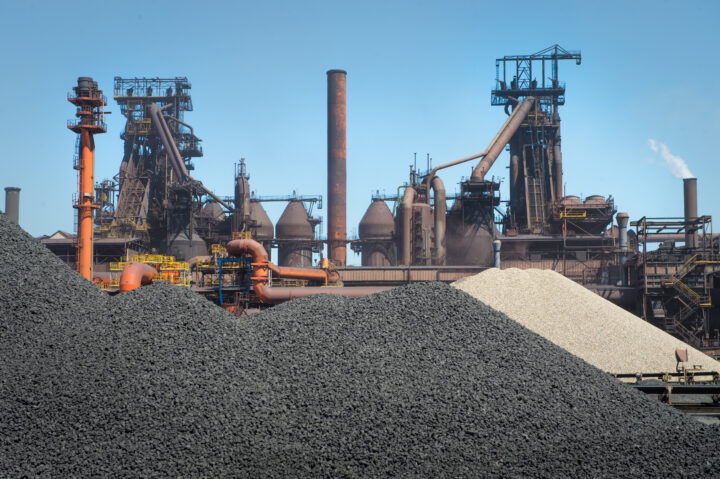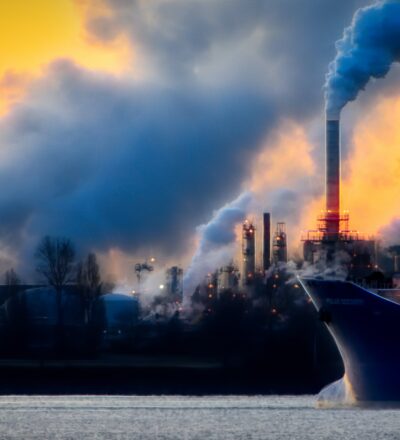The Carbon Transition Model was developed at the initiative of ISPT by a broad consortium of companies and societal organizations. This model maps out raw material, energy and emission flows for carbon-intensive companies, and predicts how these flows change with different options for achieving sustainability.
The model thus provides a common ground for realizing the industry transition to 2030 and 2050 and for meeting emissions targets. The first prototype of the comprehensive, data-driven model was successfully completed and recently the second phase of development was launched.
Exploring options for low-carbon transition
In the transition to a climate-neutral, circular future, Dutch industry has an important role to play. Especially the production of fertilizers, chemicals, petroleum products and steel is currently accompanied by substantial CO2 emissions: collectively, these sectors account for about 80% of industrial emissions. The companies involved are aware of this and are now exploring the options for large-scale CO2 reduction.
This requires substantial transformations that raise many questions:
- What are the alternative raw materials?
- Is there enough renewable energy available, and how do we deal with fluctuations in supply?
- Will an infrastructure for electricity, hydrogen, CO2 and other relevant gases be in place in time?
- What does new technology imply for the value chain?
- How will investments pay off?
The Carbon Transition Model provides insight into interdependencies and possible synergies in the transition of individual companies and industry clusters
Geoffrey Schouten – Program Manager at ISPT
“For individual companies, as well as for the government, it is very difficult to answer such questions,” says ISPT program manager Geoffrey Schouten. “There’s a lot of uncertainty that results from a need for context. With the Carbon Transition Model, we are changing that. It provides insight into interdependencies and possible synergies in the transition of individual companies and industry clusters. And it establishes how the various options for increasing sustainability affect the infrastructure. In this way, the model offers a basis for jointly determining the most logical steps towards a zero-emission, circular future.”

Modeling at site level
The Carbon Transition Model is being developed by the transition experts at Kalavasta consultancy, some of whom were previously involved in the development of a similar Energy Transition Model. “The underlying idea is that everyone uses the same data and relies on the same computations,” says Kalavasta partner John Kerkhoven. “This helps to reach consensus and take decisions. That is how we accelerate the transition.”
The model describes the inputs, conversions and outputs for the most carbon-intensive industrial sectors at the level of individual production sites, such as refineries, naphtha crackers, fertilizer plants and steel mills. For each of these sites, it provides insight into the consumption of raw materials and energy and the formation of products and emissions. All this depending on the chosen production process, and with the capability of making projections to any desired year. In this way, the model helps to explore the future. It reveals what the implementation of sustainable technology can accomplish, but also what it will take to achieve this. For the industrial site at hand, and for the Dutch industrial landscape as a whole.
Electric cracking with sustainably generated electricity
One relevant example is making naphtha crackers more sustainable. These are huge installations that process naphtha, a petroleum distillate, into starting materials for plastics and chemicals. The gases released in the process are used to keep the cracker at a high temperature, but their combustion results in the emission of CO2. To avoid that, companies like SABIC, DOW and Shell are exploring the option of electric cracking with sustainably generated electricity.
“This leaves you with the naphtha gases,” says René Slaghek, projectmanager of the Chemelot Sustainability Team in Geleen where SABIC operates a naphtha cracker. “You have to find another industrial use, and preferably one that produces no or fewer emissions.
The Carbon Transition Model helps to explore what the ultimate effect of this will be regarding carbon balance and CO2 emissions.” The companies involved at Chemelot (SABIC, RWE and OCI) are all partners in the development of the Carbon Transition Model and use it to jointly realize the sustainability transition. Slaghek emphasizes that its relevance transcends Chemelot: “The processes involved are of such a large scale that there are almost always effects beyond the site-level.”
Infrastructure also incorporated
A national dimension of switching to electric cracking concerns the emissions in electricity production. These are minimal if enough green electricity from sun and wind is available. If, however, gas or coal-fired power stations have to be used to meet the electricity demand, additional CO2 will be released.
These kinds of scenarios can be explored with the Carbon Transition Model. Another aspect is that the infrastructure must be ready to enable the planned transition. According to René Slaghek, Chemelot’s electricity demand will grow to such an extent that a connection to the 380kV grid is indispensable. The electricity demand at other industrial sites will also increase.
Geoffrey Schouten is pleased that the Carbon Transition Model consortium has recently been expanded to include a team of grid managers, so that the infrastructure aspect can be properly incorporated into the model.
There will be a different, fiercer price dynamic
Alan Croes – Head of System Outlook at TenneT
Alan Croes, Head of System Outlook at TenneT, speaks of a valuable collaboration: “Our formal contacts with industrial customers mainly concern ‘business-as-usual’ developments. But when it comes to infrastructure scenario development, we are highly dependent on the transition choices that will be made.”
To grid operators it is important that the model incorporates the fluctuating availability of solar and wind energy, Croes says. “We think companies can respond well to that, but it does require a different approach to process control and to the business case. Baseload contracts such as typically negotiated with industry will become very expensive in the future; there will be a different, fiercer price dynamic. It is important that the industry and the grid operators together make the right decisions and make the right investments in time to achieve a robust system.”
Nationwide coverage
Geoffrey Schouten looks forward to the further development of the model with confidence. “Since the start in 2020, the consortium has doubled to over twenty partners. We now have national coverage with one or more representatives from every relevant sector. The interest in the model reflects the willingness of key players to take up their role in the energy and sustainability transition. This means that the Carbon Transition Model will have real significance.”
We work with public data to stay away from competition-sensitive aspects
John Kerkhoven – Kalavasta
In addition, the consortium partners ensure the quality of the model, which is fed with concrete data from public sources such as Statistics Netherlands (CBS), the Dutch Emissions Authority (NEA), the Netherlands Environmental Assessment Agency (PBL) and TNO. “We work with public data to stay away from competition-sensitive aspects,” says John Kerkhoven of Kalavasta. “The consortium partners do not have to contribute data, but they do sound the alarm when there’s considerable deviation between our results and their calculations.”
Ultimately, the ambition is to make the model freely available, also for parties outside the consortium. Geoffrey Schouten: “We want to work towards an open-source model that is available online to everyone and free of charge, via an easy to use user interface. With that, it really becomes a decision-support tool to support the industry transition. But that’s something for the next, third phase of development.” He expects that to be completed during 2022.
Interested in joining us? Read more on the Carbon Transition Model or contact program manager Geoffrey Schouten at +31 6 3912 7326.
